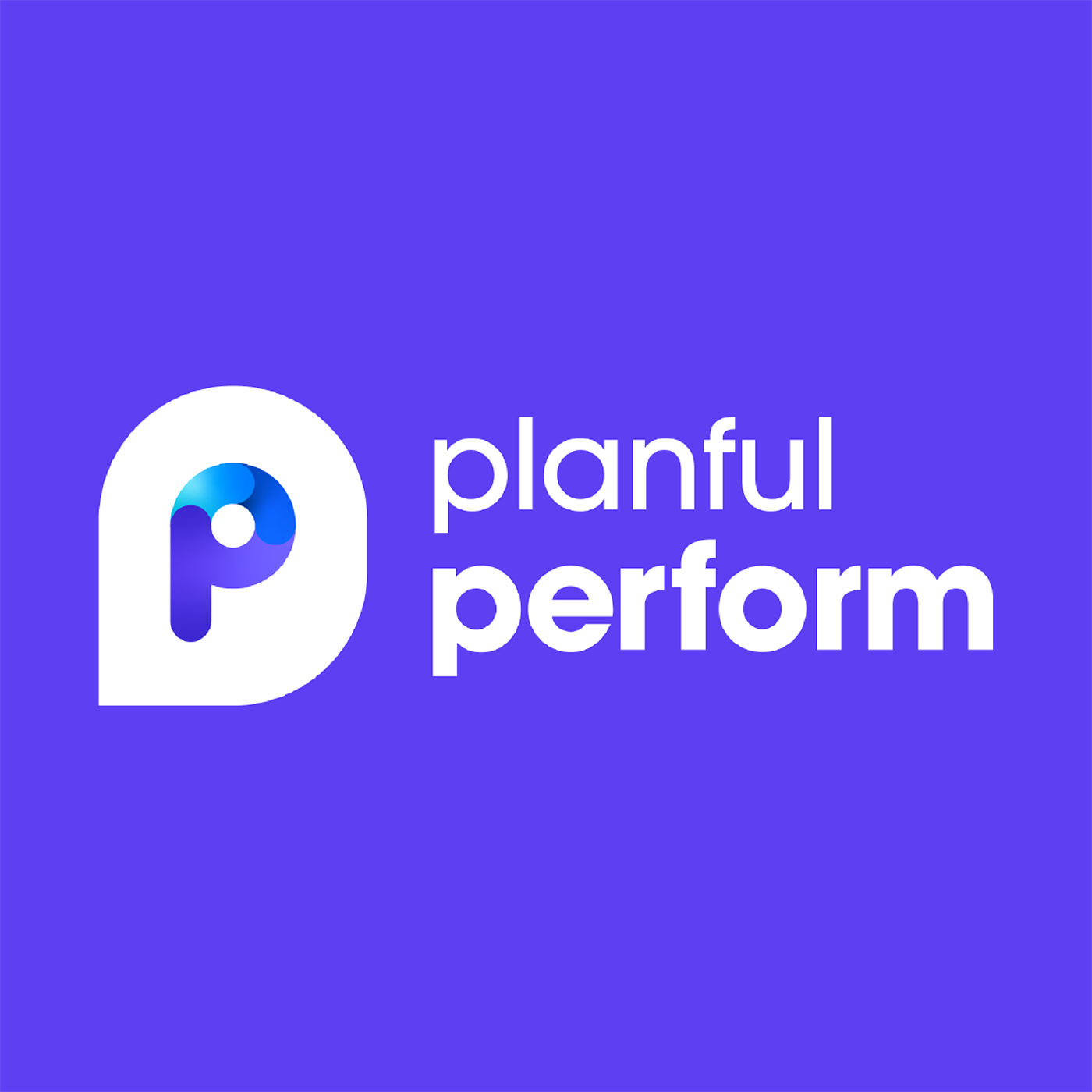Ask Us Anything: Stump the Planful Professional Services Geeks with Margaret Powell, Linda Lifchez & Will Leonard
- 0.5
- 1
- 1.25
- 1.5
- 1.75
- 2
Joe Yourceti: Thank you Rowan and thanks for cleaning that up for us. We went from stump to chumps to ask the experts and that's the way we like it. So hello everyone. I'm [ Joe Yourceti 00:00:14]. Nice to meet you all. It's honest to goodness live and as Rowan and [ Annette 00:00: 19 ] said, we'd like you to start asking your questions in the Q and A section of the chat to the right. My name is Joe Yourceti, and I have responsibility for our internal delivery services team. I'm based out of the Chicagoland area and our expert panels today are three of our solution architects. Will Leonard is one of our managing solution architects. He's based out of the Dallas, Texas area. Linda Leche is one of our solution architects based out of the Atlanta, Georgia area. And Margaret Powell is also rounding out our ask the expert section. She is based out of Ontario, Canada. We do have a handful of questions that are softball questions, but we are going to ask for you to stump us today and ask those more difficult questions out in the Q and A. So first question that we have is going to go over to Linda. Linda, what types of scenarios should we be using?
Linda Leche: Oh yeah. So this is a good one. We actually have a budget scenario, forecast scenario, and a plan scenario and a pre- loaded budget scenario. So pre- loaded budget is great if you are loading a budget from another system, maybe you want to refer to prior year budgets, something like that. It boils down to you can't change that data through a template, but for new scenarios, I would start using the plan scenarios because it grabs the best of both worlds from both a budget scenario and a forecast scenario. So you can set a forecasted point in time. It can pull in the actuals and that's where they're going to start doing more enhancements in that plan scenario.
Joe Yourceti: Excellent. All right. Second question Linda, coming your way. How long should you keep a plan scenario?
Linda Leche: I'm laughing because the team and I have had a couple of discussions about this and I have strong feelings. So I'll get my thoughts on that and I guess I'd be kind of curious to hear Will and Margaret. So my thought is once you've moved into a new fiscal year, you probably would use your prior year budget maybe to round out the year to look at some actuals, but further back than that, I'm of the opinion it's not useful. I mean, holding onto a budget it scenario from five years ago? That's not my style. But I'm curious what you guys think. Will, we can't hear you.
Joe Yourceti: Will, you might be on mute.
Will Leonard: Oh no. There we go.
Linda Leche: Yeah.
Joe Yourceti: There you go.
Will Leonard: Sorry about that. Yeah. So I tend to agree with you Linda. I mean, I think so many of our customers have different requirements with data retention and reporting requirements, and that's going to drive most of the answer, right? So for how long should you retain a scenario? Well, it's how long you have to retain it and then how long you need to report on it. Beyond that, it's very easy to archive a scenario offline or in a company directory. There's also one option that is kind of rarely used, which you can actually take that scenario out of the reporting cube, but still retain all the data and the template support. So you don't have to delete a scenario necessarily, you can actually just delete the partition and that's over in the process reporting area portion of our application. So it's an administrative task, but you can go delete that from that area. It'll still retain all the data and you can add it back if you need it. So if you want a hedge or feel like it's a little risky to delete something, you can always do that to reduce the size of your cube.
Linda Leche: Will, is risk averse.
Margaret Powell: Yeah.
Will Leonard: Yes I am.
Margaret Powell: I think you guys have covered it all to me. If it's not something that's comparable anymore, why do you need it? If you've changed structures, if you've changed elements in your data, comparing it against that doesn't make sense. It's apples and oranges. So that would be my 2 cents.
Joe Yourceti: All right. We are starting to get some questions flowing into the Q and A area so I'm going to start to take them from there. Next one up, do you know if there are any plans to enhance the dated hierarchy option in Planful? That one's coming from Angel.
Linda Leche: Ooh. I haven't heard of anything. Have either of y'all?
Will Leonard: Yeah, I would say probably not. I mean, not as far... I haven't heard anything. There may be enhancements, but unfortunately we're probably not the right team to ask about product enhancements and things like that because we tend to hear about things maybe a couple of months before they're coming down the pipe, but not as far as roadmap or backlog items.
Margaret Powell: I will take that as a question to find an answer for and I will bring it back to you Angel, because I know you're my good friend and I want to get the answers for you.
Joe Yourceti: There we go.
Margaret Powell: Yeah.
Joe Yourceti: All right. Next question up, how can attributes be used to create reports for different types of data? We bring actuals from MS Dynamics GP and we want to identify segments with markers for reporting.
Linda Leche: Will, I know you've done this.
Will Leonard: That's for me.
Linda Leche: Yeah.
Will Leonard: Yeah.
Linda Leche: You and I just looked at this recently.
Will Leonard: We want to identify segments with markers for reporting. So maybe I can start this off, because I may not understand the question completely, but we use attributes... Planful is really cool in the way that it uses attributes because we can flag data and use that attribute just like a dimension or a dimension member. So we can use it to filter data in a report. One of the things that I've done is we can actually bring in an attribute that's like a gap versus a non- gap attribute. So if you load data to multiple accounts, you want to do gap reporting, you can just filter on the accounts that have that attribute. So that's one way, but maybe you guys have some other ideas.
Linda Leche: No, nothing's jumping out. Sorry. I was reading. I was reading ahead.
Margaret Powell: Yeah.
Will Leonard: Yeah, and-
Joe Yourceti: All right. Go ahead Will.
Will Leonard: Well, I was just going to say, if you have a clarification on it or maybe we didn't answer it completely, feel free to resubmit that clarification.
Joe Yourceti: Good question crosstalk.
Will Leonard: We'll try to tackle it again.
Joe Yourceti: All right. How about for a head count, roll forward. How do you track transfers in and out and how would you bring this data in from ADP?
Linda Leche: Yeah, that's the one I was chewing over in my head. So I mean, you could... Couple of different ways you could do it, I suppose. You could create maybe an employee type that would be like a recharge or a transfer in and out. Just thinking this through. So if you've created a separate employee type, you could attach some unique compensation items to it. Maybe that post a positive one or a negative one to a transfer in, transfer out stat account. Yeah. I'd lean towards employee type.
Will Leonard: That's the only thing that comes to mind for me too.
Linda Leche: Yeah.
Will Leonard: You know, speaking of product enhancements, I think there is some work being done on the actual side. So for loading actual head count through a workforce planning and that I think that's something we'll have to take into account certainly for that.
Joe Yourceti: Yeah. All right. Next question up. What is the difference between alternate hierarchy and attributes? Why would you use one over the other? Will, I'll toss that one to you.
Will Leonard: Yeah. So difference between alternate hierarchy and attributes. Well, let me just start off with, we tend to default to using attributes, and the reason for that is primarily performance. We just find we get a lot better performance when we use attributes. You can use attributes to create an attribute hierarchy. It needs to be a level hierarchy and I think it's up to like three levels deep. Something like that.
Margaret Powell: Mm- hmm(affirmative).
Will Leonard: Off the top of my head. So you can still use a hierarchy and you can sort and filter and report on those, the different levels of that hierarchy. Where an alternate hierarchy comes into play is where you need maybe a staggered hierarchy or you need a lot more levels than what inaudible can provide. So it's a little bit more of an advanced or complicated use case, and that's really the main difference. The alternate hierarchy is handled a different way on the back end. We have seen better performance with attributes so we, again just to reiterate, we try to use those wherever possible.
Linda Leche: Yeah, and I'm just noticing that Kermit kind of put a good example of a use of attributes where he's saying," We want to identify some accounts as clinical and some as nonclinical within reports". So there you go, you answered your own question. Yes Kermit, I would suggest creating an attribute named clinical, nonclinical or whatever makes sense and then you're going to go through and set those accounts as they should be and then you'd be able to create a report. I've done that kind of thing with controllable and non- controllable expenses. That is something that we see in hospitality industry so and elsewhere I'm sure.
Joe Yourceti: And just to clarify for some of the questions coming in, so we're not going to be answering questions related to product development. This is more towards the implementation side of it or how do I implement or do something within the current product set? So it looks like there are some questions in that are more forward facing or future facing. We're going to avoid those questions. This one's more related to, how do I implement? And with that, the next one up is crosstalk-
Margaret Powell: Just one clarification, Joe. I just dipped into the chat, and I think when we're talking about attributes, we just want to be clear in saying that attributes we're talking right about right now is not workforce planning. We're talking about attributes on the segments. So each segment, each, as Linda said, an account could be defined as one or the other, not workforce planning attributes. That's just another use of the same word. So just to make sure everyone's following along with us. Thanks.
Joe Yourceti: You betcha.
Will Leonard: Yeah. For those attributes... Sorry, I just have one other thing. So the steps for that, right? So you would add the attribute. You need to add that to your reporting area as a basic attribute. So that's very important when you use it as a basic attribute. That's going to give you the ability to filter your reports for things like that.
Joe Yourceti: All right. Next question up, team. How do you recommend using scenarios for budget requests? We want to know the impact before approving and to be able to merge the change into the working plan scenario.
Linda Leche: Yeah. I mean, I'm thinking the merging is where I'm kind of going.
Will Leonard: Yeah, it's the solution on the fly, right?
Linda Leche: Mm- hmm( affirmative).
Will Leonard: But that does sound like a little bit more complicated requirement that we'd need to understand some nuances before we can answer.
Linda Leche: Yeah.
Will Leonard: Budget requests. So like a request approval process, we have handled in different solutions. One that comes to mind is actually a resource request, an approval process that I think all three of us have worked on, right?
Linda Leche: Yes.
Will Leonard: And in that position there were lots of considerations. There were security considerations, and then who's the requester and who's the approver and what happens when they approve, right? So will that drive some costs or even some recovery costs on that? It was a template- based solution and structured planning all within a single scenario, but we used statistical accounts and some dimensionality to solve that one. That said, I mean, for this specific use case, it almost sounds like a different scenario would be kind of like the request. And for that one, I don't have a great example of that, but I'd love to learn a little bit more about that requirement.
Linda Leche: Yeah.
Joe Yourceti: All right. Will, I'm going to give you the next question. What drives you to dynamic planning versus structured planning?
Will Leonard: So on a very elementary basis, this is going to be when the dimensionality differs so much from your structured platform that you need other dimensionality to support your planning or reporting. So a great example of this is if you need to do weekly or daily planning. We know that in a structured platform, that time dimension goes down to the month and that's it. So that's one thing that drives us to dynamic planning all the time. We also have... I mean, even internally in Planful, our professional services team. We have to do planning and forecasting for ourselves, just like anybody else, and our dimensionality differs so much from the finance team's requirements that we have a dynamic planning model for our own forecast. So dimensionality is probably the biggest driver. I don't know if you guys have any other thoughts on that, but-
Margaret Powell: No, dimensionality-
Linda Leche: I was going to say that-
Margaret Powell: Yeah. I think that's inaudible. In the case of the in internal planning system that we have, Linda and Will, Joe and I are all segments. So is all the projects we work on with you and we can track hours and dollars and all that type of thing, and actually feed it back to structure planning to feed revenue numbers there as well. So we use it internally and I think we took... That was a process that we drag out of to Google sheets and put it in dynamic planning and I know there was lots of time savings around that so.
Joe Yourceti: All right. Next one up is a workforce planning question. What is the best practice to run a headcount report on the workforce planning cube for a forecast plan?
Linda Leche: Yeah. So on this one, I'm not sure if they're looking to have headcount by named individual. If so, yeah, you can run that in the workforce planning cube. I actually created one of those real quick early this morning. I think it's employee name... Employee is one of the segments that you'll see when you go into select the workforce cube. You pick your time period, your scenario. It starts to get a little... There's a little more work involved when you start to pull in other measures related to workforce planning, but headcount, you should be able to pop one in pretty quickly. If you don't need to see named individual, you can run that through the financial cube. So if you have stat accounts that hold your work... your head count numbers, you can pull that in just as you would any old GL account.
Will Leonard: Yeah, I think the most common issue we see in workforce planning reports is the account selection.
Linda Leche: Yeah.
Will Leonard: A lot of times it doesn't occur to us to go select an account when we've already selected a compensation item and an employee and a measure, but that account, if you don't select something, it's just going to use the reporting default, which typically is just top of the account hierarchy. And sometimes we'll see, well, if you have any calculated members in there, it's just going to error out your report, and you're just kind of like," Well, why is my report erroring out?". So one of the best practices is to be very specific on the accounts that you want to report on. Even go so far as to pull those into the row axis of the report. If you know that you're reporting on headcount, for example, go ahead and pull those in at the leaf level. It'll make your report run faster and avoid those types of errors.
Linda Leche: Yeah. And I know that there is a focus... One of the webs I'm in, I think Rowan or Grant talked about webs this morning, is on xP& A so there is some work being done to improve workforce planning reporting.
Will Leonard: Yes. Yes, indeed.
Linda Leche: It makes my little heart happy.
Margaret Powell: Mm- hmm( affirmative).
Joe Yourceti: All right. Next one's coming on over from someone who's not quite made it down the road to our team yet. What are the top secrets to a successful Planful project? How do we succeed? All right Margaret, I'm picking you. You're in.
Margaret Powell: I also have this option, so I might choose that or whatever. I'd love to use my sign at some point. So I just think generally from a project perspective, it's engagement, right? It means you come to the meetings when... you come to those sessions and you're ready to play. I think the big challenge right now we're dealing with is the world of Zoom and it means I've got five monitors, I've got dogs barking, I've got so many distractions, and often in the Zoom, we don't have as good physical cues to see," Oh, Linda's not listening. She's working on something", or Will's just stepped away for a second. So really engage and be ready to be present and be ready... I think the key thing from my experience is learn to drive, and it's learn to drive Planful, right? So we're going to say," Share your screen", and everybody takes a huge step back. Nobody wants to share their screen and show what they know or what they don't know but the time to learn is when we're sitting, watching you. It's a lot easier to learn to drive with someone in the passenger seat. So I think that's share your screen. We've done this a bunch of times. We'll click through things really fast, but let's help you build that sort of muscle memory and figuring out where to go. So in my opinion, it's the engagement. It's always be learning, use the training. It's there. It's always accessible. You can kind of dip in if you need it. Just- in- time learning. And I plan. Plan the project plan, plan your milestones, work to those milestones. Every project's going to hit a bump. Sometimes the bump's a bug on the windshield, sometimes the bump flips your car and you end up in the ditch, but you can always get back on the road. It's just making sure you know the steps to get there. So I think my things were engage, learn and plan. Linda, Will, you got anything?
Linda Leche: Go ahead Will.
Will Leonard: Go ahead, Linda. Aha. All right, all right. I mean, I totally agree with you, Margaret. I think engagement is number one. So some things that we repeat often are training engagement and just having that hands- on. I mean, I know like personally when we're going through a working session, starting day one, obviously we're implementing hierarchies and we're trying to load data and things like that. So I like to do the first couple of examples and then have my clients drive from there. The more they're driving, the better off we're all going to be because they're learning to own and maintain the system hands- on and that's the way that most people learn the best.
Margaret Powell: For sure.
Linda Leche: Yeah, don't be afraid. I mean, I often see," Ah, I'm a little scared to click", and," Can I mess it up?". Well, it's kind of hard. In my, what, 12 or so years of consulting, I think I've had somebody mess up a, it was a different piece of software, once. So everything is recoverable. Don't be afraid. Be curious. Don't be afraid to ask questions. I love being stumped because then I reach out to people like that are sitting below me and get the answers so.
Will Leonard: Yeah.
Joe Yourceti: All right, next one up and is a best practice question. What is the best practice to set up report flows to enable a quick monthly routine report creation?
Margaret Powell: I think that I got that one too.
Joe Yourceti: Yeah. Margaret, you're in.
Margaret Powell: Report collections. I think report collections is what you want to look at right there. We actually talked about them in a session earlier. Ron and I did. There's also an amazing learn and grow that was done by everyone's favorite, Diane Sears. So if you just dip into your tenant and you look at, I think it's the reporting track, you'll see a learn and grow on reporting collections. And what they'll do is let you say, " I want to run these five reports and I want to run these five reports burst across certain mentions". It's going to give you exactly what you want, it's in your system now, and you can set it up in about 10 seconds. I'll give you 30 seconds to set it up. And you can export to Excel. You can export to PDF. You can do Google sheets. All with the click of the button, you're going to generate a whole bunch of reports. Again, one of the interesting things there is you can burst it, which I talked about in our session, but I could say," Run this group of five reports and run it for Joe, Linda, Will and myself and email it". I could schedule that to run nightly and in the morning I'd come in and I've got my reports in my email box and I can just flip through those rather than going in and looking for it and Linda having to go in and look for it. It's right there at your fingertips. And so I'd definitely check out report collections. I think that would answer your requirement there and it's probably in your system right now.
Joe Yourceti: inaudible. Go ahead Will.
Will Leonard: I think on that topic... Yeah. Sorry, Joe. I mean on that topic, as a prerequisite for collections, you need to have your reports set up to use best practices so they can be used in report collections. You wouldn't want to create a report, for example, that says" FY21 budget V2" or" Actuals FY20". You want to have a report that is repeatable and reusable, so that you're only maintaining one version of that report. The best way to do that is to use substitution variables at minimum on your scenario and your time dimension and then those report collections can leverage those substitution variables in the same way.
Margaret Powell: And I think that sounds more complicated than it is.
Linda Leche: Yeah.
Margaret Powell: Because really it's just... We'll go in places and they'll be like," These are my 50 reports", and I'll go," But that's the same report", right? And we can very simply impair it down to just one or two reports using substitution variables. Again, I think there's some good training on that in the learning as well.
Linda Leche: Mm- hmm(affirmative).
Joe Yourceti: All right. Next question up. Is there a difference between budget forecast type scenarios versus plan scenarios?
Linda Leche: Mm- hmm( affirmative), good question.
Joe Yourceti: What's the best practice?
Will Leonard: Great. So we-
Linda Leche: There is, but I... Yeah, go ahead Will because I was just going to say I don't know what it is right off the top of my head. I'd have to go-
Margaret Powell: You want to borrow my sign Linda?
Linda Leche: Oh yeah, yeah. Thank you.
Will Leonard: Yeah. Well, so with budget scenarios, obviously the timeframe is different, right? You have a start period that's always the first period of the year. With forecast and plan scenarios, those two are very, very similar. There have been some recent enhancements as far as how data is able to seed within a forecast scenario, but when planned scenarios came out, they were way far ahead as far as how forecast scenarios concede versus how a planned scenario concede. You concede from a different scenario for every period and a different time period to different time periods. Planned scenarios also have some slightly different options in terms of what objects or artifacts, like budget templates, can be copied over. But I'd say forecasting planned scenarios are very similar right now. There's not a huge difference in my mind at least, in functionality between the two. I do know that going forward, planned scenarios are planned to be... I suppose, enhanced the most and supported the most going forward. They're going to be our recommended scenario type and so we are recommending to use that scenario type, the planned scenario type as a best practice.
Joe Yourceti: All right, team. Next question. Can group rows be integrated when exporting roll- up accounts to Excel?
Linda Leche: Can group rows be integrated? I'm not...
Will Leonard: I'm not seeing the question. Can you repeat the question?
Linda Leche: No, I inaudible.
Joe Yourceti: Can group rows be integrated when exporting roll- up accounts to Excel?
Margaret Powell: I think it's like can you expand what's in the group. When it goes to Excel, it's still collapsed. I think it actually does let you expand in Excel, right?
Will Leonard: Oh, I see what you mean.
Margaret Powell: Yeah. Yeah.
Will Leonard: So like when you run a report and the member has the crosstalk.
Margaret Powell: Then you have it collapsed. Yeah.
Will Leonard: Yeah. No idea.
Margaret Powell: That's something we have to test.
Will Leonard: inaudible.
Linda Leche: Yeah, I'm...
Joe Yourceti: All right, hold up the stumped sign Margaret. I think crosstalk.
Linda Leche: Yeah, I guess it's just a matter, I just don't a hundred percent understand. We can just leave it.
Joe Yourceti: We have just a few more moments-
Margaret Powell: I think in a report column, if you had them collapsed and you exported it out to Excel, it would still look collapsed, but I thought you could open that up. I'd have to test it though, which I'm not crosstalk. It's risky.
Linda Leche: Should I run with it?
Margaret Powell: Yeah.
Joe Yourceti: We have just a few more questions before we wrap up. So if anyone else wants to get questions in, now's the time. Linda, next one up going back to scenarios. How many scenarios should I have?
Linda Leche: As many as you actively need to report on. I'm not a fan of keeping more than you really need. Margaret had an interesting use case earlier today. She said she had a customer at one point that needed, was it 10 years of budget data? Yeah, you're on mute girl.
Margaret Powell: Oh yeah.
Linda Leche: There you go.
Margaret Powell: I had to do it once at least, right? Something I could do that like," Pick me". I think they had to do like a 10 year plan that was regulated and locked in. So they actually had two years bi- month and it was... So it was a 10 year long range plan where I think the last five years were annual. There was the three were quarters and then the first two were months, and they actually had data flow from that annual number, broken out into the quarters, broken out into the months. And they almost did a backwards rolling forecast or something. I don't know what the right term is for that. But yeah, I agree. Keep the scenarios that make sense. As soon as it's an orange, throw it away. Keep the apples.
Linda Leche: There was a good one-
Margaret Powell: I like the question there. Joe, I see a question there about GL summary data length.
Linda Leche: Yes. That was the one I was just chewing on.
Margaret Powell: I would like to talk about that one.
Joe Yourceti: I don't see that question in my... Oh, for actual GL summary data? That one?
Linda Leche: Mm- hmm(affirmative).
Margaret Powell: That's a good one and I-
Joe Yourceti: inaudible for actual GL summary data loads from ERP, do you recommend loading? And then it went away. Month to date activity for balance sheet. You guys see it up on screen?
Linda Leche: Yep.
Will Leonard: Yeah.
Joe Yourceti: You're in. Go.
Margaret Powell: Year to date.
Linda Leche: Year to date.
Margaret Powell: Always give us that.
Linda Leche: Yes.
Margaret Powell: Planful can handle either. There's a lot more gymnastics to the month to date. I know Diane's going," Yes. I agree", because she's the one who kind of stands and stomps her feet and says," Give us year to date for balance sheet. That's what makes sense". So definitely year to date for balance sheet. We could take months to date for income statement, because we have an ability to load account based, which lets us load months to date for income statement and year to date for balance sheet, but balance sheet year to date will make your life a lot easier. Trust me.
Will Leonard: Well, and I like it for the P&L as well.
Margaret Powell: Yeah.
Linda Leche: Okay.
Will Leonard: I mean, if we could have just best of both worlds and the reason for this, one of the main reasons, is that if you have any prior period adjustments in your ERP-
Margaret Powell: You catch up.
Will Leonard: Then they're going to true up on a year to date basis. When you're loading year to date amounts, you'll always have the correct balance, but if you're loading month to date activity and you have those prior period adjustments going back 3, 4, 5, 6 months, which does happen, maybe not for everybody, but it does happen. It's a surefire way to true up those balances.
Linda Leche: Yeah. I agree. Year to date. I agree. Yeah, a hundred percent year to date for balance sheet crosstalk.
Margaret Powell: I might make a sign that says" year to date".
Joe Yourceti: Year to date.
Linda Leche: Even have like an engraved stone box.
Joe Yourceti: One more question team as we're up against the bottom, and it's the first question that came in from Rowan Tompkin from Redwood City. He asks," How do I get more marketing budget?".
Margaret Powell: Sell your shirts.
Linda Leche: Yeah. You buy the professional services team that funky Terry cloth tiger shirt.
Joe Yourceti: Shirt, and that'll do it.
Will Leonard: Absolutely.
Joe Yourceti: All right team. We had a blast. Thanks for your hanging out with us and asking us some questions. We enjoyed it. We're going to head back on over to the main stage and pass it back on over to Rowan and Annette to take it home. Rowan and Annette, I'll hand over to you.
Margaret Powell: Thanks guys.
Linda Leche: Thanks!
Margaret Powell: See you.
Rowan: Hey everybody.
Linda Leche: Bye.
DESCRIPTION
In a free-form Q&A format, Planful’s in-house product experts will answer questions, share tips, and guide you through the features and functions you’re interested in exploring. You’ll learn speed-saving shortcuts, see how to best solve complex challenges, and better understand how the Planful platform can be utilized to give your business an even greater advantage.
Today's Guests

Linda Lifchez

Will Leonard







